Mih and mišnice bagpipes from the Islands of Cres and Lošinj
Notes and considerations of ethnomusicological research
Paolo Vinati
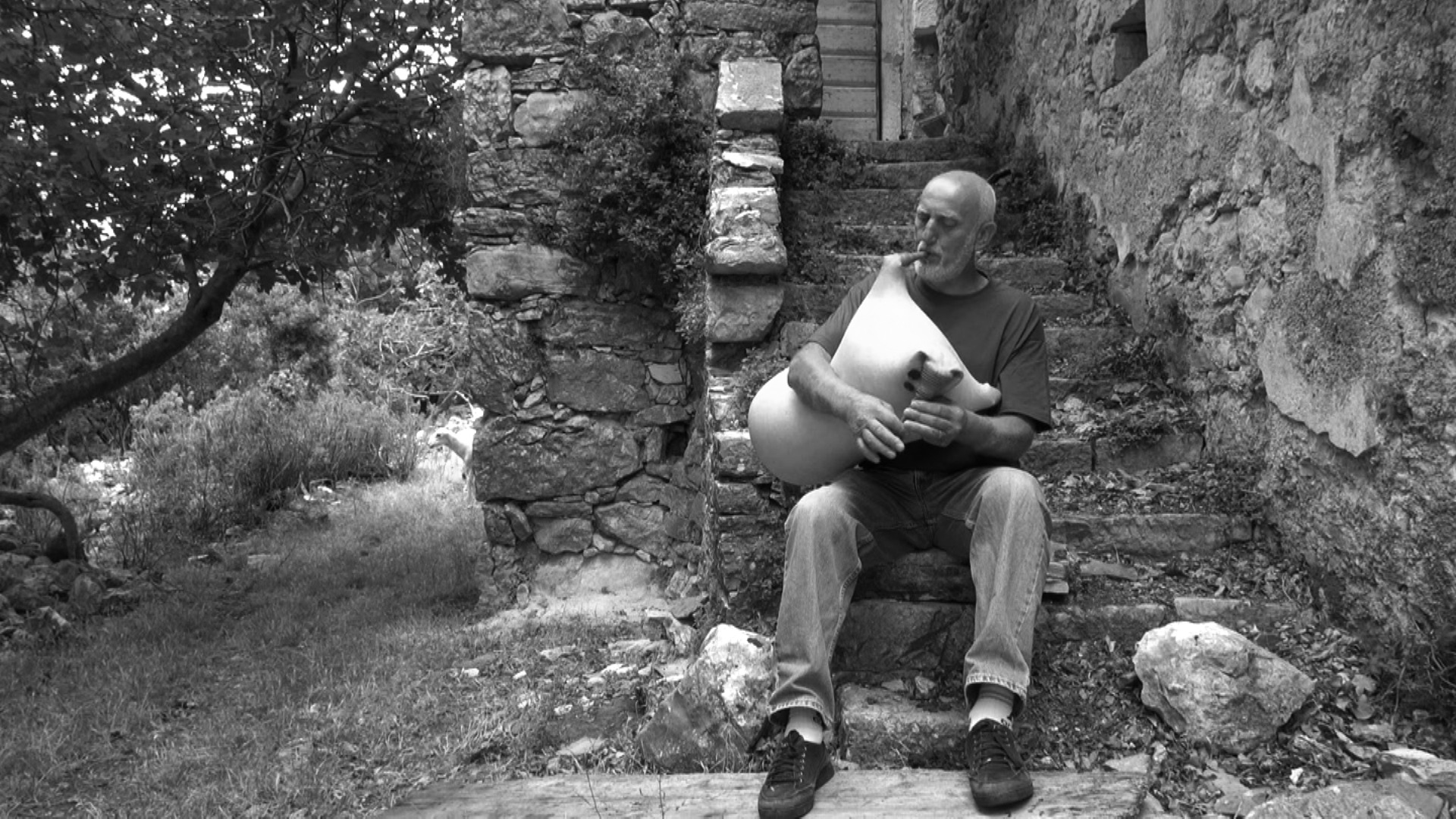 Mario Mužić, Orlec
Mario Mužić, Orlec
Introduction
The locating and cataloguing of 33 musical instruments, represented here under the title Mih and mišnice bagpipes from the islands of Cres and Lošinj, are part of a composite and detailed research project. In 2014, upon the fourth Mijeha[1] bagpipe festival which gathers together players of bagpipes from all over Europe on these two islands, a visual anthropological research was begun of the local players of bagpipes (known locally in Croatian as mih, meh and mišnice) who are still active today.[2] The audio-visual research – which continued until the summer of 2015 – included musicians and repertories which live among folklore and in private. The interviews about learning music, performance conditions, instrument maintenance, performance methods and musical performances, accompanied the image of an instrument of the past which retains its function even in the present, and so encouraging those interviewed to consider the “health” of the instrument.
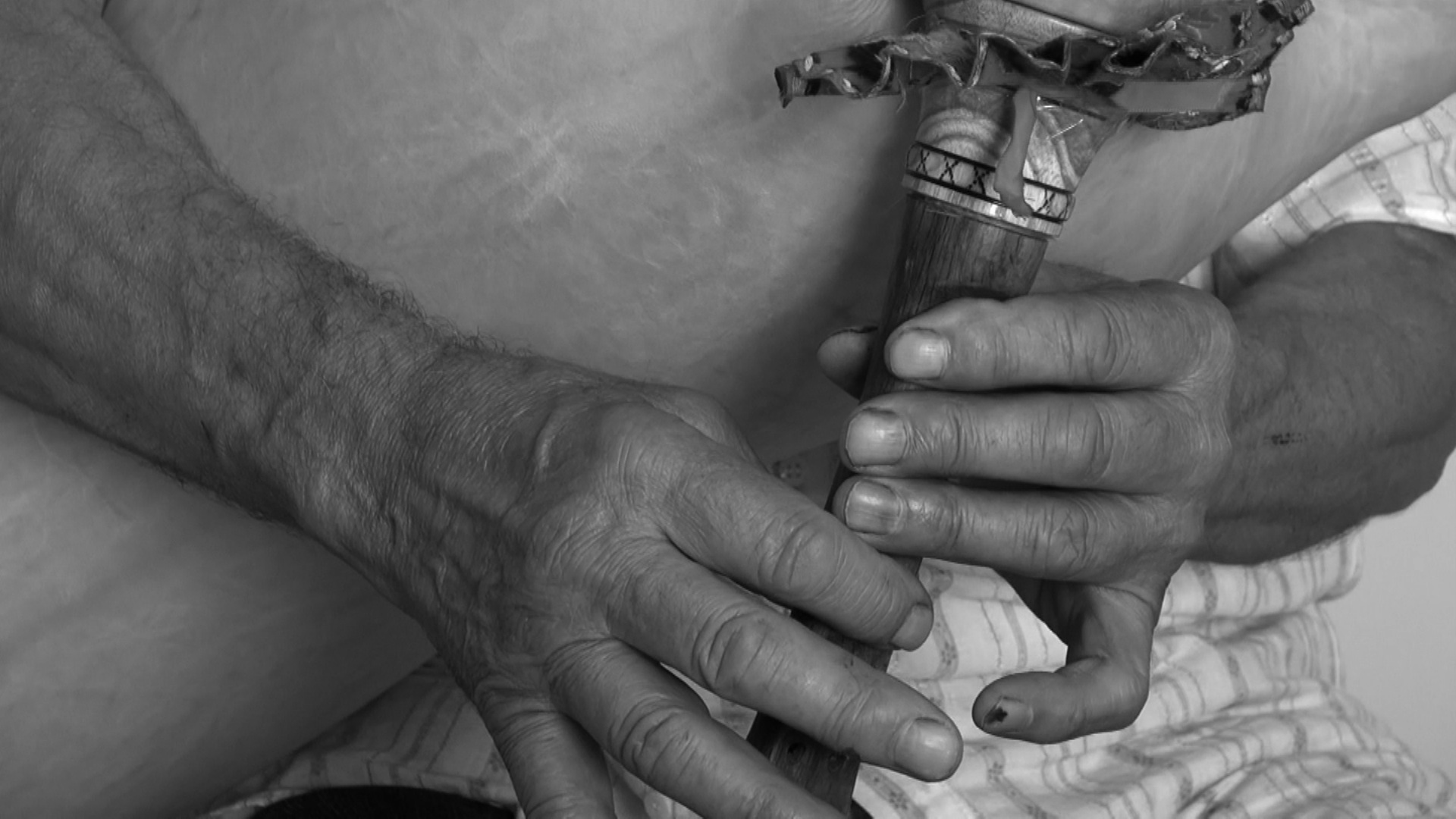 Ive Mužić plays the instrument
Ive Mužić plays the instrument
Particularly interesting was the comparison of the current musical practice with that of previous years, which was possible thanks to the acquisition of films made in the 1970s by RTV television in Zagreb and the locating of amateur films made in the 1990s.
In the winter of the same year thanks to the material gathered during the field research, a 59-minute ethnological film was made called Zvuci otoka – Suoni dale isole (Sounds from the Islands).[3] After that, apart from the film being shown in towns on the two islands during the summer, it was also shown at renowned festivals and conferences of ethnographic type documentary films.[4]
The ethnomusicological research and video documentation included musicians, the organisers of cultural events and the tourist association, offering an insight into the musical tradition of mih outside of its usual boundaries, which otherwise are quite limited. The second step in the studying of the mih was the specialised processing of the available instruments on the island itself.
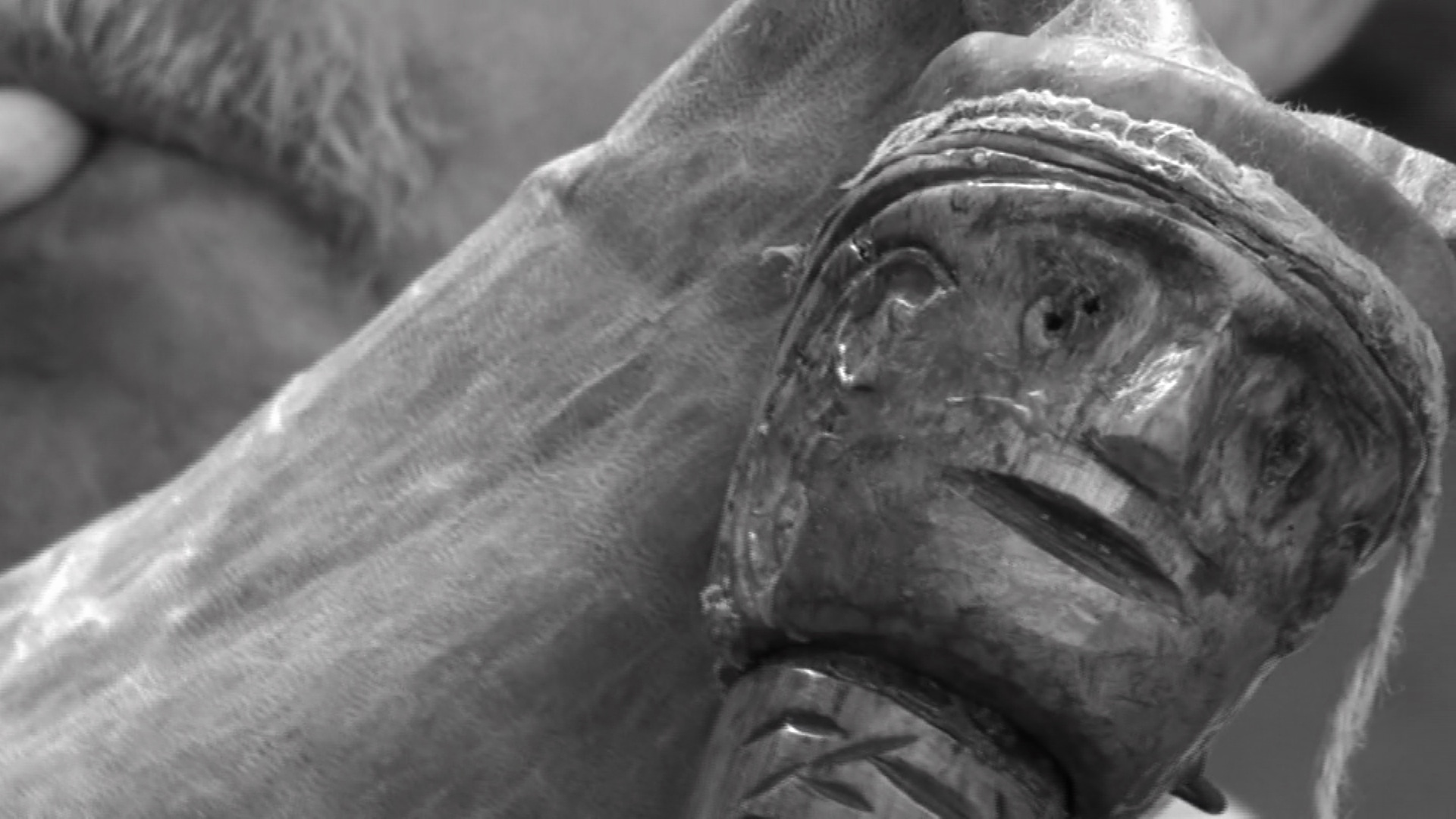 A detail on the instrument from Lubenice (Cres)
A detail on the instrument from Lubenice (Cres)
Mih, meh and mišnice pipes from the islands
The 33 musical instruments – exhibited here in a virtual gallery[5] - were found and catalogued in the summer of 2017. The instruments, unlike the other collections on this site, have not been gathered together in one place, but are kept by their owners and in this way creating a kind of heritage museum.
When we were organising the field research, we prepared questionnaires showing sketches of the sought after criteria and forms to be filled-in. As a template, sketches of the Ethnographic Museum in Pazin were used which are available on the website entitled Istrian musical instruments online (visit: http://www.iti-museum.com/en/instruments/mih-i-misnice). Each of the located instruments was photographed, measured, and its production features, the history of the instrument itself, the makers and material used to make it were recorded. Each instrument was individually classified with the initials PAVI[6] and a number of the protocol which consists of three digits (PAVI 001, PAVI 002, etc.).[7]
The instruments examined first belonged to the players met during the field research (PAVI 001, PAVI 002, also see the record sheets of each instrument). The majority of the musicians possessed several instruments, some were used regularly, others rarely, others no longer. Two of the instruments are owned by two museums: Museum of Cres in Cres (PAVI 014) and the Museum of Shepherding in Lubenice (PAVI 022). The other musical instruments are in the possession of the children or relatives of deceased musicians (see the record sheets of each individual instrument).
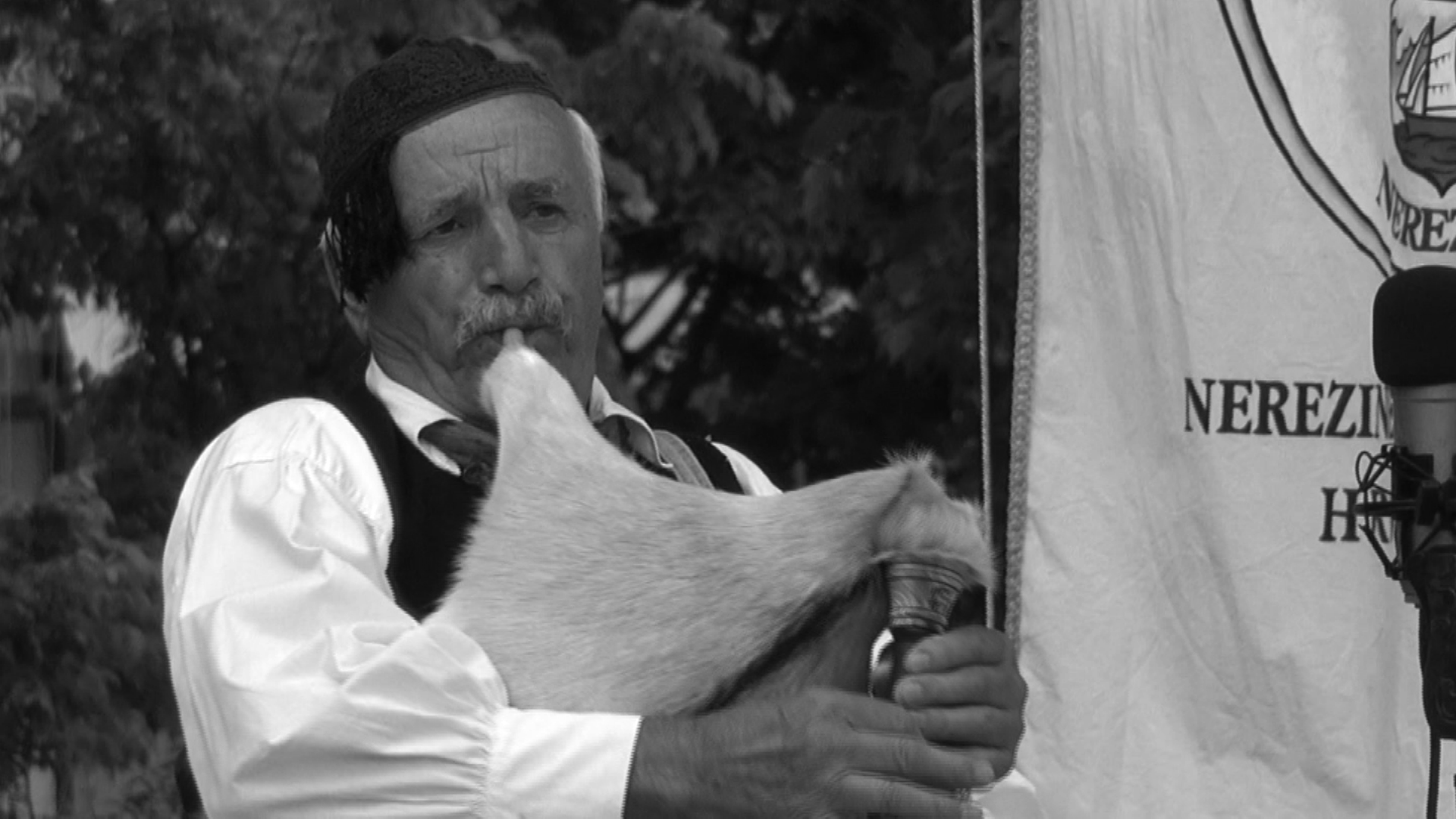 Ive Mužić, Cres
Ive Mužić, Cres
The first feature of the design of island mih relates to the length of the chanter. On the basis of the statements of the islanders, they are characterised by a longer chanter in comparison to those of Istria, which gives them a deeper sound. Several musicians still use the Istrian version of the instrument today because for them it is a more appealing high and squeaky sound. In truth, the chanters produced in Istria are somewhat shorter and vary from 151 mm to 16 mm (PAVI 010, PAVI 011, PAVI 012, PAVI 023, PAVI 024, PAVI 033). Other instruments were made by Istrian builders upon request and follow the model of instruments brought from the islands of Cres and Lošinj. The oldest instruments made on the islands have chanters from 162 mm to 220 mm and longer. The manufacture of instruments on the islands was not in the hands of craftsmen but occasional builders (shepherds and villagers) who created copies of the same on the basis of previous models, not achieving a level of standardisation.
The instrument was always of a soloist nature and without accompaniment, and so the problem of intonation never came into question. All the chanters produce the same sacral intervals and melodies, even when other levels are broadcast, they are considered to be correct.[8] Often on the stocks of European bagpipes – the part which is inserted into the chanter – there are the carved heads of goat-like animals (goat, ibex, mouflon etc.) or frightening contours (of demons). Some Istrian makers adopted a whole hollow-horned animal (or just the head) engraved with the technique of pyrography on the stock, in other words, on the rear part of the chanter as their “factory brand” (PAVI 010, PAVI 011, PAVI 012).
On some of the oldest found mih on the islands, a human face[9] is engraved on the stocks. The mih from Nerezine (PAVI 001) features the face of a man with a moustache; the instrument from Lubenice (PAVI 020) the face of a man, although crudely made.
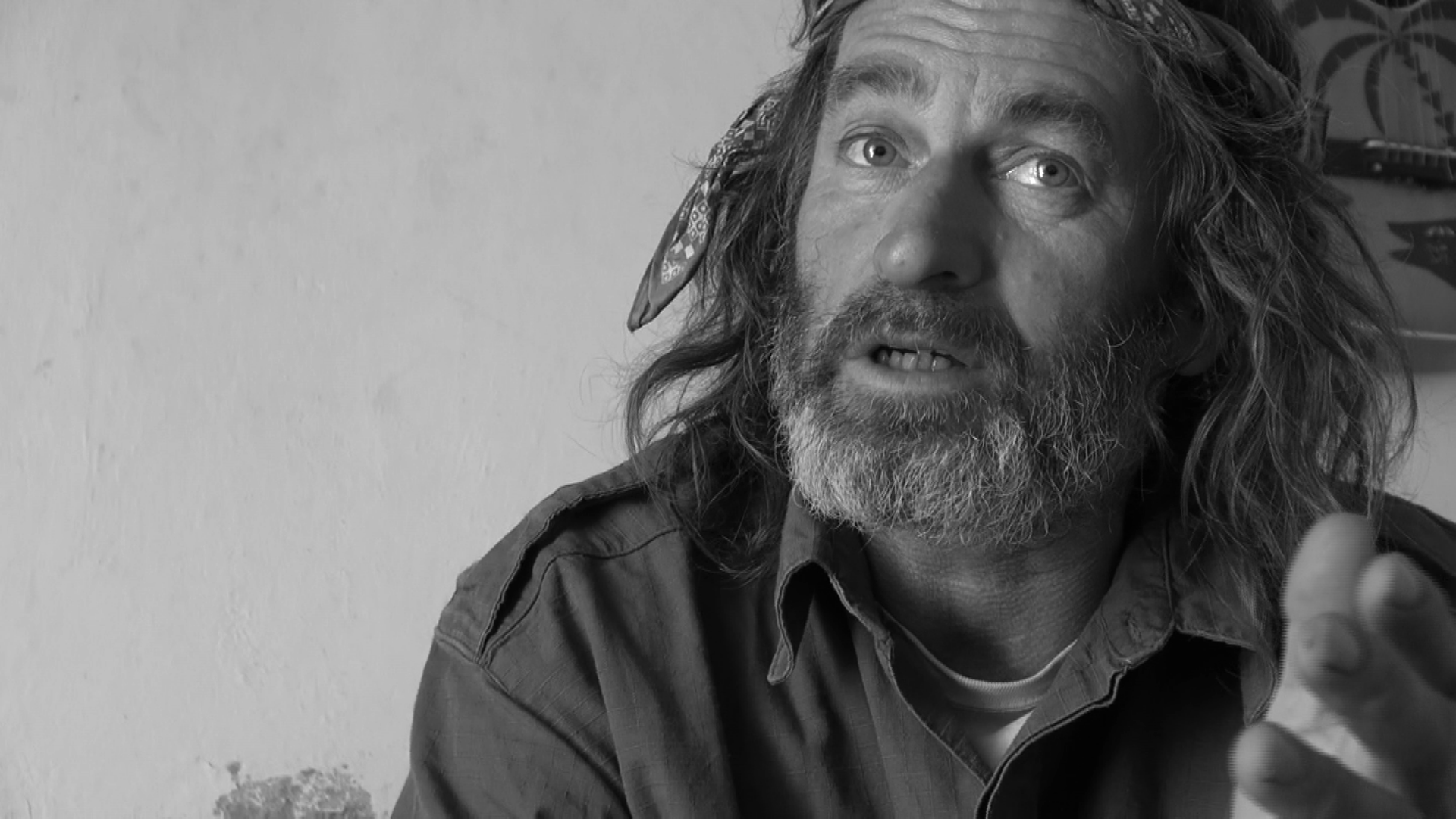 Jordan Kučić, Belej
Jordan Kučić, Belej
The remaining two instruments from Lubenice (PAVI 021 and PAVI 031) are amongst the most significant mih in the collection. Human faces are engraved on the stocks: on the first mih ears, nose, eyes and mouth, in green and red colours, whilst on the second the contours of a face, which were probably coloured once (the paint is visible in some parts). Both mih have a small opening at the end of the chanter (PAVI 031 two openings) beneath the left ear of the engraved face, where it is thought (according to the interpretation of a handful of informants) a flower was placed when the instrument was used at weddings.
The other instruments were made during the 1980s and originated from Lubenice (PAVI 007 and probably PAVI 005 and PAVI 015); which leads us to consider Lubenice as the place on the two islands, where it was still possible to make the musical instrument in the 70s and 80s.[10] The names of the builders of the mentioned instruments are not known although they were certainly casual builders and not woodworkers.[11] Many of the instruments are of rough materials; which leads us to the assumption that the musicians themselves made their own instruments and built them as one-offs based on the model of an older instrument.
It was only in the 1990s that musicians from the islands arrived in Istria to make musical instruments with real woodworkers, who with the help of machines (lathes) succeeded in making the finished instrument with less effort. It is mentioned that several musicians accepted the Istrian instrument, with a chanter of smaller dimensions; other musicians brought their own old instruments to the Istrian makers which represented a model for the making of the new ones, of longer dimensions. The Istrian makers who were most accessible from the islands were Franko Kos from Labin and Valter Primožić from Kršan (who passed away prematurely in 2013), both twenty or so kilometres from the harbour at Brestova, which was also where the islanders arrived. The various instruments of Franko Kos (PAVI 002, PAVI 011, PAVI 012) and the respected maker Valter Primožić (PAVI 003, PAVI 010, PAVI 024) have been catalogued.
Also catalogued in the research were instruments which differ from those common in Istria and on the islands of Cres and Lošinj. The arrangement of the finger holes is as follows: six holes on the right side and three holes on the left side (PAVI 008 - PAVI 009 with side lugs - PAVI 019 - PAVI 022 with side lugs); holes for playing on diple (double whistles) and Dalmatian mih. Some of these chanters (PAVI 019 - PAVI 008 - PAVI 009) have a fourth hole on the right side, which is plugged with wax or wood, thereby achieving the arrangement of finger holes typical for the island instrument.
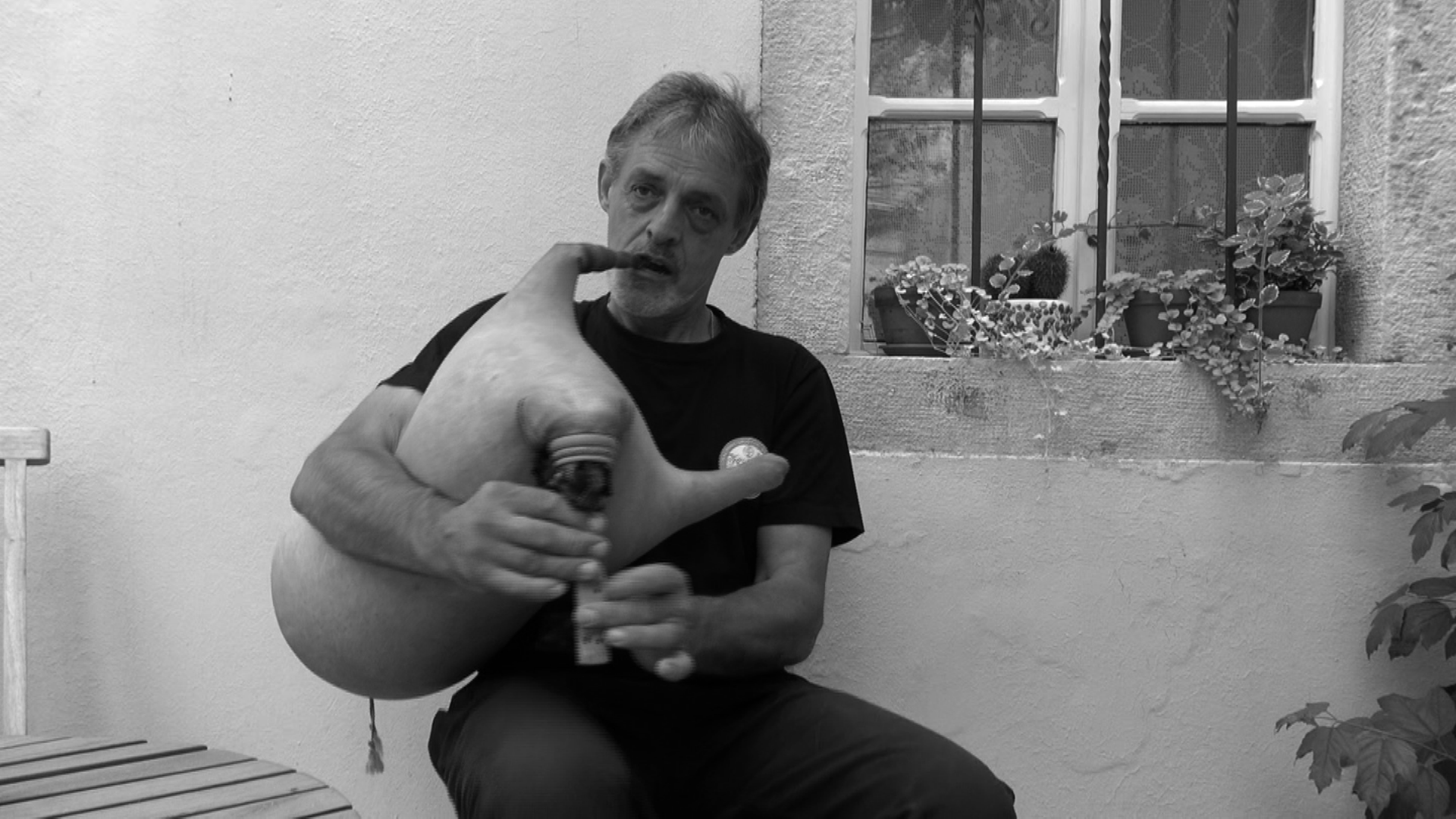 Dario Kučić, Osor
Dario Kučić, Osor
The wood used predominately in the production of the chanters is juniper, a widespread plant on the islands; other instruments are made of ebony (PAVI 012), ash (PAVI 026), walnut (PAVI 027), holm oak (PAVI 028), olive (PAVI 030). Ive Mužić made the instrument, catalogued as PAVI 031, from an unclassified oriental wood. Ive worked as a chef on a ship which transported timber from India to Croatia; on one of his trips he made the instrument using the wood which was being transported.
Of extreme importance was the encounter with Dionisio Kučić (1944). Born in Vidovići, near the tourist resort of Martinšćica, he moved to Mali Lošinj in 1963 and worked as an electrical engineer in a small town company. He too was a mih player (like his father) and he made various chanters and stocks using small DIY tools (drills, sanders etc.) from the example of old instruments. The instruments that he built himself were very well made and have a significant harmony (see PAVI 027, PAVI 028, PAVI 029). Such instruments have no decoration (on the stock of instrument PAVI 028 there is an engraved Greek motif). Dionisio never revealed his ability, and so the musicians of the two islands at the time did not recognise his skills. His son Hadrijan, born in 1977, a graduate electrician, although not a musician, also proved himself in the making of several instruments (PAVI 030). The forma mentis of Dionisio and his son Hadrijan technically, mechanically, and least of all like villagers or shepherds, became accustomed to the work with mechanical tools, the measurements and calibrations which is also reflected in the tools which they created.
The musician Ive Mužić from Cres, originally from Orlec, made several bagpipes by knife for his own use; in the last few years he prefers to contact the Istrian makers for new instruments, which thanks to the lathe are more practical and quicker to produce.
The Mijeha Festival organised on the two islands thanks to two local folklore groups, each year in a different place (Studenac from Nerezine and Folklore Group from Orlec) has also contributed to the encouragement of the tradition of the island mih. The familiarisation of other musicians and makers, who share the same passion and problems of instruments with air reservoirs, has provided new encouragement in the musical activity and modernisation of the instrument. This is, for example, the case of an encounter between the island musicians and a Slovakian bagpipe manufacturer and musician Juraj Dufek, who for some mih made reeds of carbon and their holders from plastic (see PAVI 004, PAVI 006 and PAVI 015) and in this way he replaced the original reeds made of common organic reeds (Arundo Donax). According to the words of musicians, the instrument gained greater stability in overcoming the problem of intonation caused by atmospheric/climatic changes, which allowed a more reliable instrument.
The only maker of goat-skin bellows on the islands is Ive Mužić from Cres, a mih player who also makes bellows for Istrian builders. In other words the bellows of a mih without animal hair and requires a particular and painstaking process. For one of his bellows, Mužić tried to preserve the animal hair for aesthetic reasons: “this animal had beautiful hair” (PAVI 012).
As we wait for new research and knowledge about the bagpipes of the islands of Cres and Lošinj, we hope that visitors will enjoy visiting the three rooms of the virtual museum of instruments of the musical tradition of the islanders.
Footnotes:
[1] The Mijeha Festival began in Split in November 2017 with the Simply the Best award organised by Croatian tourist agencies, and is intended for touristic-cultural initiatives.
[2] The research is carried out alongside the support of the folklore group Studenac from Nerezine, the Folklore Group from Orlec, the municipalities of Cres and Lošinj, the tourist boards of the two islands and several private promotors (Hotel Televrin, the Losinia Agency) and is organised thanks to the special passion of Mr Ferdinand Zorović from Nerezine.
[3] The trailer of the film can be viewed on the website: https://www.youtube.com/watch?v=WP_QfFPelrc.
The part of the video documentary with the interview with Dinko Zorović is accessible on this website under the category Multimedia
[4] Zvuci otoka (Sounds from the Islands) (by Paolo Vinati | Croatia Italy | 59 minutes) was selected at various film festivals amongst which are Days of Ethnographic Cinema in Moscow, International Festival of Ethnological Film of Kratovo, ICTM - Audiovisual Ethnomusicology Ljubljana, MAV – Università La Sapienza in Rome.
https://www.cinemaitaliano.info/film/13975/festival/suoni-dalle-isole-sounds-from-the-islands.html)
[5] I would like to thank Mario Buletić the curator at the Ethnographic Museum of Istria in Pazin who edited the page and translated the descriptive texts of the instruments into Croatian and Italian.
[6] The reference PAVI is derived from the first two letters of the name of the person responsible for the research and cataloguing, meaning the author (Paolo Vinati).
[7] The photographs were subsequently processed on a computer, adding a white background to all the instruments. My thanks go to Alexander Tirel who helped me in the processing of the photographs.
[8] It would desirable to deepen the theme of the intonations and nota finalis for the comparison of ancient musical instruments from the islands and from the mainland.
[9] A human face shaped or engraved on the stock of bagpipes is also found on some bagpipes from Dalmatia, Bosnia and Herzegovina (http://www.gajde.com/en/hrvatska-tradicijska-glazbala).
[10] The folklore group from Nerezine submitted two new musical instruments in Lubenice, of which one has been catalogued under the reference number PAVI 007; the other instrument is not available. The source of information is Elvis Živković from Nerezine.
[11] And in this case it would be necessary to deepen the research with new field work.
__________________________________________
Paolo Vinati graduated in ethnomusicology at the University of Bologna, DAMS Faculty. He undertook several researches in the area of Lombardia region, Trentino-Alto Adige, in Austria, Montenegro and Croatia. He published books, curated audio CDs and filmed video documentaries. He collaborated with different research institutions and universities, like the Universität für Musik und darstellende Kunst in Vienna. At the moment he is collaborating with the Istitut Ladin Micurà de Rü (Bolzano, Italy).